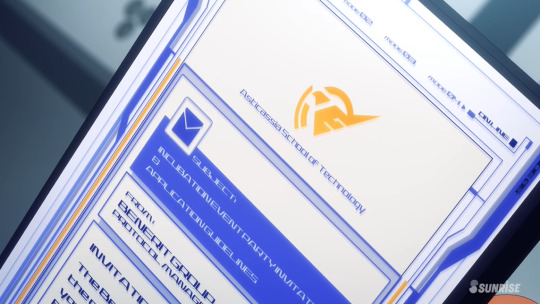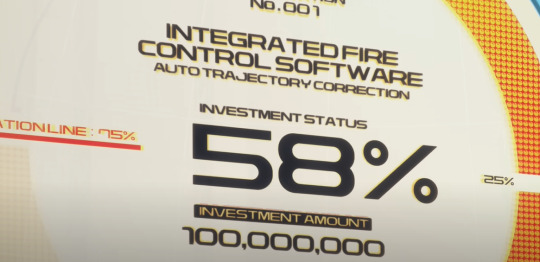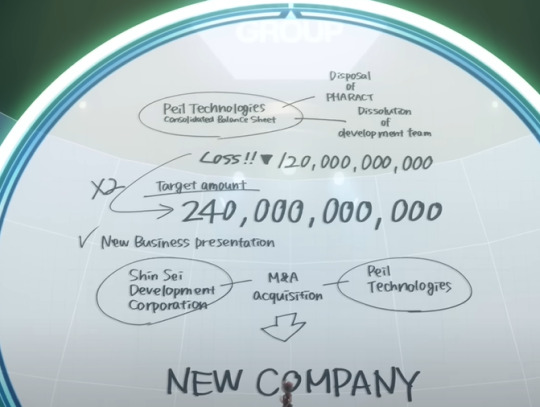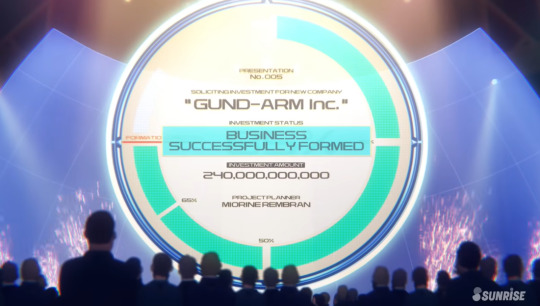#integrated office applications
Text
At the 2023 Defcon hacker conference in Las Vegas, prominent AI tech companies partnered with algorithmic integrity and transparency groups to sic thousands of attendees on generative AI platforms and find weaknesses in these critical systems. This “red-teaming” exercise, which also had support from the US government, took a step in opening these increasingly influential yet opaque systems to scrutiny. Now, the ethical AI and algorithmic assessment nonprofit Humane Intelligence is taking this model one step further. On Wednesday, the group announced a call for participation with the US National Institute of Standards and Technology, inviting any US resident to participate in the qualifying round of a nationwide red-teaming effort to evaluate AI office productivity software.
The qualifier will take place online and is open to both developers and anyone in the general public as part of NIST's AI challenges, known as Assessing Risks and Impacts of AI, or ARIA. Participants who pass through the qualifying round will take part in an in-person red-teaming event at the end of October at the Conference on Applied Machine Learning in Information Security (CAMLIS) in Virginia. The goal is to expand capabilities for conducting rigorous testing of the security, resilience, and ethics of generative AI technologies.
“The average person utilizing one of these models doesn’t really have the ability to determine whether or not the model is fit for purpose,” says Theo Skeadas, chief of staff at Humane Intelligence. “So we want to democratize the ability to conduct evaluations and make sure everyone using these models can assess for themselves whether or not the model is meeting their needs.”
The final event at CAMLIS will split the participants into a red team trying to attack the AI systems and a blue team working on defense. Participants will use the AI 600-1 profile, part of NIST's AI risk management framework, as a rubric for measuring whether the red team is able to produce outcomes that violate the systems' expected behavior.
“NIST's ARIA is drawing on structured user feedback to understand real-world applications of AI models,” says Humane Intelligence founder Rumman Chowdhury, who is also a contractor in NIST's Office of Emerging Technologies and a member of the US Department of Homeland Security AI safety and security board. “The ARIA team is mostly experts on sociotechnical test and evaluation, and [is] using that background as a way of evolving the field toward rigorous scientific evaluation of generative AI.”
Chowdhury and Skeadas say the NIST partnership is just one of a series of AI red team collaborations that Humane Intelligence will announce in the coming weeks with US government agencies, international governments, and NGOs. The effort aims to make it much more common for the companies and organizations that develop what are now black-box algorithms to offer transparency and accountability through mechanisms like “bias bounty challenges,” where individuals can be rewarded for finding problems and inequities in AI models.
“The community should be broader than programmers,” Skeadas says. “Policymakers, journalists, civil society, and nontechnical people should all be involved in the process of testing and evaluating of these systems. And we need to make sure that less represented groups like individuals who speak minority languages or are from nonmajority cultures and perspectives are able to participate in this process.”
79 notes
·
View notes
Text
Foreign nationals will no longer be able to apply for a Post Graduate Work Permit (PGWP) at the U.S.-Canada border, Immigration Minister Marc Miller said on Friday.
Miller said the move was being implemented to curtail something known as “flagpoling,” which is when some temporary residents of Canada bypass the normal wait times involved in applying for a work or study permit online by leaving the country and then immediately re-entering to receive same-day immigration services.
“The time and effort required to process applications from ‘flagpolers’ takes officers on both sides of the border away from their crucial role in protecting the safety, security and prosperity of Canadians and Americans. This measure will help prevent this practice, while maintaining the integrity of our immigration system,” Miller said in a statement Friday.
Continue Reading.
Tagging: @newsfromstolenland
33 notes
·
View notes
Text
Repost of an ask I accidentally deleted.

Pov: You're a turian discovering this new sapient species broadcasting their whole location to the galaxy very loudly and decide to go down to investigate the humans.


Humans are like a rubber ball, which is what the first contact war proved. The harder you throw them, the harder they bounce back, and the next thing you know, all of your loyal turian population are sending creepy fanmail letters to the cute human news reporters.
The fact that we express joy by showing our teeth probably is something that never sat well with the turians ever, huh?
Also POV: you're the Councillors meeting the human team sent to you trying to convince you on why they should have an embassy right next door and please let them in the citidal please please please please please please-




We Don't bite .Often. We are silly little guys let us in come on. We have been STARVED for any galactic connections. Please we were this close to blowing each other up with nuclear weapons.
Ignore that last bit. Hahaha. Ha. So let us in! Friends! We are friends, let's be friends now. Tell us how you guys reproduce and what you eat. We have cats! We have chocolate, and we have produced more porn than a single human can consume in their lifetime! We have everything you need so let us join the partyyyy.
We've brought beer :) You don't have that, right? Let us in, and we will give you all the food we've made.
Humans annoying their way into getting an embassy so soon is very hilarious.
Because you know damn well that our politicians played the first contact war card and guilt tripped the council into letting us sit on the big kids' table after the turian bullied us to hell and back. We brought the waterworks and pretended they really hurt our feelings just to get the shiny human embassy office.
It didn't matter that they threw us in some random office next to the elcor and the embassies food court. You know damn well none of the humans stayed on the office and they're constantly annoying their neighbour embassies or the citidal tower instead.
Hell, we even stooped so low to accept being called the council's new favourite pet race just so we can get all the benefits and jumpstart our integration into the galaxy.
Constantly asking questions. Constantly touching things. Constantly asking to eat this and drink that without regards to if it will kill us or not.
That's how they found out humans had the most diverse genetics btw, before they could get any tests done on the humans with viable results, they found the said humans eating everything they come across and updating a google docs sheet of things they tried that haven't killed them yet.
The doc is shared between all the humans on the Citidal, and everyone adds their updates. Some even tried inedible stuff just to see, because what if space plastic is different than our plastic? Sure, they ended up in emergency care, but it was so worth it.
The humans are very impatient, and the other races quickly learned. They want something done, and they want to do it now, and they want to get the gratification immediately! They make the salarians look like monks despite their short life spans
In the span of a year, earth humans were sending in job applications to different colonies and planets, ones they haven't even visited yet.
By the span of 5 years, humans successfully spread through the galaxy and you always find one nearby. It's harder not to spot a human than it is to spot them.
How do you find out if the person wearing this armour is an asari or a human? Simple, just wait.
The human will announce it themselves by doing some dumb shit like twirling the loaded gun in their hand to do a really sick trick they saw on the human social media app, tiktok.
Udina was a little shit, yes, but you know that man was knocking on the councillors' doors every day at 3am. to show them his powerpoint presentation on why humans deserve a seat on the council.
Humans fit wherever you put them. They eat everything, they can handle most temperatures. they only need oxygen and some sleep, and they're good to go!
It's hard for the aliens to predict just what type of human any given one of us they meet could be.
There's just too many to keep track of. The most rude person and the nicest person a turian have met are both humans.
They want to see the stars, they want to take pictures, they want to stare at pretty sunsets on different planets and they want to speak to aliens, hug them and learn more about them
They're burning bright like a star, wanting so much all the time. It's intimidating to the other races how hungry humans are for information and connection that they come across as a bully. Their friendly nature gets misunderstood and their kind gestures gets questioned for ulterior motives.
Because humans love helping, it's in our genetic code as a tribal species. We love feeling useful for the tribe and fulfilling others needs. We love giving someone a sip of our drink, opening the door for someone else, picking up a stray empty can and throwing it in the trash.
Going on useful fetch missions just to see someone else smile, hearing a stranger vent because we have been there, smiling at people we make eye contact with, giving compliments and laughing at jokes we overheard from strangers.
We are social, be it online or offline. We love others, we love loving others and we want others to love us back. Each human is so different yet so similar, some of us will feel more at home with the aliens than with other humans while others might not even stomach leaving earth
We are also...kinda of feral in a way? We don't notice it because we're surrounded by humans.
But if you look closely, so many of our traits are animalistic and could be perceived as scary by an alien that had thousands of years to evolve past them. Our hardware is still relatively new, and an update won't come for a long time.
The hugging. the yelling, the dancing, playing tag. games of chase. We evolved from predetors, our eyes are trained to follow a single target precisely.
Rough playing with your friends, enjoying throwing objects and catching it like a ball, enjoying tearing through food with our teeth. Hell we look like predators, we act like ones too.
We're not like worker bees, like turians who always give their all to everything they do.
No, we preserve energy, then lunge at our target the second it's gaurd falls down. A persistent predator that wears you down rather than overpowering you like a krogan
Btw, Korgans evolved from prey because of where their eyes are placed. Only predetors have forward facing eyes to focus on a single thing, the wider one's vision is the more likely they used to be a prey animal.
Side note, but Krogans would probably taste kinda good bc of that, predators' meat evolves to be shrivled and bitter. While Krogans have a literal hump full of food nutrition! Turians would taste bad unless chicken in that case... CHICKEN.
So do you think Hanar and Drell find it adorable that we used to be aquatic?
Anyway so-
In a single decade, humanity successfully integrated fully into the galaxy and joined the Andromeda project to explore the new one. We're like the opposite of hanar. So many other races achieved less than half of what we did in ten times the amount of years
Because we need social contact, it's vital for our survival as much as the sun is. It's our drive for exploring and hoping for aliens, for some other race out there we could befriend and learn about.
New things give us such a rush of dopamine and we're constantly chasing it with stars in our eyes.
In a way, the aliens probably felt the most special after meeting the humans. To have a race so interested in you and learning about you and appreciating your culture. To have thousands if not millions of humans ready to dedicate their lives to documenting you just because you happened to be the prettiest race in their eyes.
Like I'd gladly throw my life away to study the Drell.
And we things other races don't! We party harder funny enough.
A turian mentions it in ME2. How most alcoholic beverages everyone uses today, was invented by humans. How it seems like humans found out every intoxication there is and let it spread like wildfire to others. Out endless libraries of music, the videogames we've made, the art, the instruments we play.
And a Salarian mentions how human food is their favourite. Don't the Hanar also like our sushi? funny enough.
We're infectious. Easily accept anyone and everyone into our groups if we happened to click with them, we even befriended the animals on our planets enough to care for them like our own children.
45 notes
·
View notes
Note
What kind of work can be done on a commodore 64 or those other old computers? The tech back then was extremely limited but I keep seeing portable IBMs and such for office guys.
I asked a handful of friends for good examples, and while this isn't an exhaustive list, it should give you a taste.
I'll lean into the Commodore 64 as a baseline for what era to hone in one, let's take a look at 1982 +/-5 years.
A C64 can do home finances, spreadsheets, word processing, some math programming, and all sorts of other other basic productivity work. Games were the big thing you bought a C64 for, but we're not talking about games here -- we're talking about work. I bought one that someone used to write and maintain a local user group newsletter on both a C64C and C128D for years, printing labels and letters with their own home equipment, mailing floppies full of software around, that sorta thing.
IBM PCs eventually became capable of handling computer aided design (CAD) work, along with a bunch of other standard productivity software. The famous AutoCAD was mostly used on this platform, but it began life on S-100 based systems from the 1970s.
Spreadsheets were a really big deal for some platforms. Visicalc was the killer app that the Apple II can credit its initial success with. Many other platforms had clones of Visicalc (and eventually ports) because it was groundbreaking to do that sort of list-based mathematical work so quickly, and so error-free. I can't forget to mention Lotus 1-2-3 on the IBM PC compatibles, a staple of offices for a long time before Microsoft Office dominance.
CP/M machines like Kaypro luggables were an inexpensive way of making a "portable" productivity box, handling some of the lighter tasks mentioned above (as they had no graphics functionality).
The TRS-80 Model 100 was able to do alot of computing (mostly word processing) on nothing but a few AA batteries. They were a staple of field correspondence for newspaper journalists because they had an integrated modem. They're little slabs of computer, but they're awesomely portable, and great for writing on the go. Everyone you hear going nuts over cyberdecks gets that because of the Model 100.
Centurion minicomputers were mostly doing finances and general ledger work for oil companies out of Texas, but were used for all sorts of other comparable work. They were multi-user systems, running several terminals and atleast one printer on one central database. These were not high-performance machines, but entire offices were built around them.
Tandy, Panasonic, Sharp, and other brands of pocket computers were used for things like portable math, credit, loan, etc. calculation for car dealerships. Aircraft calculations, replacing slide rules were one other application available on cassette. These went beyond what a standard pocket calculator could do without a whole lot of extra work.
Even something like the IBM 5340 with an incredibly limited amount of RAM but it could handle tracking a general ledger, accounts receivable, inventory management, storing service orders for your company. Small bank branches uses them because they had peripherals that could handle automatic reading of the magnetic ink used on checks. Boring stuff, but important stuff.
I haven't even mentioned Digital Equipment Corporation, Data General, or a dozen other manufacturers.
I'm curious which portable IBM you were referring to initially.
All of these examples are limited by today's standards, but these were considered standard or even top of the line machines at the time. If you write software to take advantage of the hardware you have, however limited, you can do a surprising amount of work on a computer of that era.
43 notes
·
View notes
Note
how does one get a job telling people they can't come into a building? is there something i need to put on my resume (very contrary, good at sitting, etc) to make hiring managers find me more appealing for the role?
So my actual day job is as a security officer; I'm the supervisor for my shift.
Telling people to go away has been an integral career skill for me. Telling angry people who are screaming to leave and not come back is a job skill. The best part of my job is that it is an express part of my job to NOT BE NICE TO RUDE ASSHOLES.
Now, tbh being a contrary asshole won't make you automatically good at the job. You still have to get along with your co workers, the clients at the site you work, ect. And for access control, a good deal of it is perfectly innocuous service providers or deliveries who have all the proper permissions and training and you just make polite small talk with them as you contact their site contact and direct them back to wherever they're going.
When I applied for the job....fuck, was it 8 years ago? No, fuck, 9...when I applied for the job nine years back, the things I put on my application that caught the hiring manager's eyes were
Customer Service skills
Willing to work nights and weekends (we don't get weekends or holidays off; sites are usually manned 24/7/365. Schedules vary, but I work 12 hour shifts and that works out to 3 days on/3 off, 4 days on/4 off. I do often work holidays. Holiday pay is higher.
Multitasking skills
Can keep calm in chaotic situations
Not easily intimidated
Basic computer skills. This last one is huge. You would be amazed how many people I've had to coach step by step through saving a word document during training.
MOST of the time, I am perfectly nice and pleasant. I've received regular commendations and bonuses from the security companies I've worked for because so many people comment on how nice and helpful the security lady was. Most people who show up at sites have a job to do there and want to do it and get paid, same as me.
HOWEVER, despite that at least weekly I deal with an asshole. My shift lets me. My boss jokes that it's like rolling a pumpkin full of ground beef into a lion enclosure. Best part of my job. I once worked retail, and telling asshole dudes to get off company property before I have them removed and/or banned from every other location of the huge multinational company I am stationed at is SO excellent.
Now. The important thing to remember as well about security is that yes, a lot of it is sitting for hours watching cameras or doing rounds through the same place over and over. It can be monotonous and boring.
HOWEVER, then sometimes you get a call like "PLEASE SEND HELP THE ENGINE IS ON FIRE" from a driver getting loaded in the plant. The plant which is filled with explody shit and human lives. This happened last Thursday. That, friend, is where I earn my pay.
I did my job. Sounded alarm, notified fire team, locked down the plant to keep anyone else out, ran accountability to make sure everyone in the plant had checked into shelter areas, all that stuff. Fire was out in 5 minutes. But you have to be able to not panic in that moment when you get that call, because otherwise everything can go to shit VERY fast.
So. Hope this helps!
486 notes
·
View notes
Text

U.S. Air Force Testing New Sensors On The F-22
The F-22 recently tested multiple new sensors as part of the modernization, with plans for a rapid prototyping effort to field them and expand the capabilities of the jet.
Stefano D'Urso
F-22 new sensors
U.S. Air Force F-22 Raptors assigned to the 27th Expeditionary Fighter Squadron and Philippine Air Force FA-50PH light jet fighters conduct joint combined exchange training, above Basa Air Force Base, Philippines, on Aug. 9, 2024. (U.S. Air Force photo by Senior Airman Mitchell Corley)
The U.S. Air Force is testing multiple new advanced sensors on the F-22 Raptor, which could extend its service life and also be applied to systems of the Next Generation Air Dominance family. The info was disclosed during the Life Cycle Industry Days conference.
“The F-22 team is working really hard on executing a modernization roadmap to field advanced sensors, connectivity, weapons, and other capabilities,” said Brig. Gen. Jason D. Voorheis, Program Executive Officer for Fighters and Advanced Aircraft. “The Raptor team recently conducted six flight test efforts to demo advanced sensors.”
Voorheis also added that the service is planning for a rapid prototyping effort to get these sensors fielded quickly. “We’re executing that successfully, and that will lead to […] a rapid fielding in the near future,” he said.
The news was first reported by Air and Space Forces Magazine, which also added that Air Force officials have also confirmed that the stealthy pods seen since last year being tested on the F-22 are indeed InfraRed Search and Track (IRST) sensors. The development of a new IRST sensor for the Raptor was also confirmed by the service’s budget document, however they did not mention the sensor being podded.
The sensors are part of an upgrade program worth $ 7.8 billion before 2030, of which $ 3.1 billion are for research and development and the remaining $ 4.7 billion are for procurement. This is in contrast with previous statements that the Air Force was looking to retire the F-22 around 2030.
“From an F-22 sunsetting perspective, I don’t have a date for you,” said Voorheis when asked about the topic. “What I can tell you is that we are hyper-focused on modernization to sustain that air superiority combat capability for a highly contested environment for as long as necessary.”
This also reflects recent comments by Gen. Kenneth Wilsbach, head of Air Combat Command, who mentioned that the service should retain also the older F-22s in the Block 20 configuration, together with the latest ones. The General added that several upgrades are being planned and even the older Block 20s are still very capable, should they be needed for combat in an emergency.

An F-22 Raptor assigned to the 1st Fighter Wing, Joint Base Langley-Eustis, Virginia, approaches the boom of a 134th Air Refueling Wing KC-135R Stratotanker to refuel along the east coast of the United States Aug. 14, 2024. (U.S. Air Force photo by Tech. Sgt. Teri Eicher)
Voorheis also mentioned a software being integrated on the Raptor, which he defined as Government Reference Architecture Compute Environment, or “GRACE.” He further explained this open architecture software would allow “non-traditional F-22 software” to be installed on the aircraft and provide “additional processing and pilot interfaces.”
It’s unclear if the new GRACE is related to Project FOX, the innovation project tested last year which allowed to integrate on the F-35 software applications developed for the F-22. This allowed both 5th gen fighters to fly with common tactical software applications.
The F-22 upgrades
Some of the upgrades expected for the F-22 Raptor were unveiled in the Fiscal Year 23 budget request documentation and in an official artwork shared by Gen. Mark Kelly, then Commander of Air Combat Command. In the artwork we can see three Raptors loaded with new stealthy external fuel tanks, two underwing faceted pods and a new unknown air-to-air missile, but there are even more novelties in the documents, which unveils a previously undisclosed relationship between the F-22 and the development of the Next Generation Air Dominance (NGAD).
Two years after the upgrades were announced, we might have gotten, earlier this year, the first glimpse of the new stealthy external fuel tanks being developed for the F-22 Raptor. The aircraft was, in fact, spotted near the Mojave Air and Space Port and shows the Raptor with two fuel tanks, whose shape is reminiscent of the one shown in 2022.
The new tanks are officially known as Low Drag Tank and Pylon (LDTP) and designed to be stealthier and more aerodynamically efficient than the current 600-gallon fuel tanks. In the FY2023 budget request, the Air Force mentioned that the F-22 LDTPs are advanced technological designs providing increased persistence and range while maintaining lethality and survivability, critical to future mission execution and to maintaining Air Superiority.

U.S. Air Force Capt. Samuel “RaZZ” Larson, F-22 Raptor Demonstration Team commander and pilot, practices different maneuvers while training for the upcoming 2023 airshow season, at Joint Base Langley-Eustis, Virginia, Jan. 6, 2023. (U.S. Air Force photo by Airman 1st Class Mikaela Smith)
The low drag tanks are intended to reduce drag, facilitate supersonic flight with external tanks and extend the range of the F-22. The pylons are equipped with smart rack pneumatic technology to accurately control ejection performance and smooth wind swept surface for minimum drag without stores.
The two pods installed under the outer underwing hardpoints have already been spotted during flight testing on an F-22 at the Air Force’s Plant 42 facility in Palmdale, California, in February 2022. The latest budget documents mention an InfraRed Search and Track (IRST) sensor being developed for the F-22, which is now confirmed to be the sensor housed inside the two pods, although they could host also other capabilities in addition to the IRST.
In July 2024 we got an up-close look at one of the pods installed under a Rockwell Sabreliner 65 testbed after a test campaign at Nellis AFB, Nevada. It would have been expected to see some kind of transparent surface associated with the IRST, however the surfaces on the nose of the pod appeared to be opaque. We still cannot exclude that there are two different variants of the pod, depending on the equipment inside.
The last upgrade featured in the artwork is a new unknown air-to-air missile. While there are a number of air-to-air missile programs in the works, it is possible that the one in the image could be a representative design, which may or may not correspond to the real deal, for the highly secretive AIM-260 missile. So far, the missile has never been depicted in any kind of image and details about the program are very scarce.
The development of the AIM-260, also called Joint Advanced Tactical Missile, was first unveiled in 2019 and has been in the works at least since 2017. The goal of the new long-range air-to-air missile is to replace the AIM-120 AMRAAM (Advanced Medium Range Air-to-Air Missile) and counter the threat posed by the Chinese PL-15 missile, while avoiding any foreign threats being able to outrange the AIM-120.
Among the few known technical details, the new missile will be compatible with the AMRAAM dimensions, but obviously with greater range, and is planned to be carried in the F-22 weapons bay and on the F/A-18 at first, with the F-35 to follow. Flight tests are already in progress and the missile is expected to be fielded by next year. Because of these reasons, it would be reasonable to suppose that the one shown in the image could be at least a hint at the AIM-260.
Other upgrades mentioned in the budget request are a Mode 5 Identification Friend or Foe (IFF), Link 16 and Multifunction Information Distribution System Joint Tactical Radio System (MIDS JTRS), a new Operational Fight Program, advanced radar Electronic Protection, Embedded GPS/Inertial Navigation System (INS) Modernization (EGI-M), Open System Architecture (OSA), new encrypted radios.

File photo of the U.S. Air Force’s 5th gen aircraft, the F-22 and the F-35. (Photo: U.S. Air Force)
A new helmet is also being tested by F-22 pilots, as part of the Next Generation Fixed Wing Helmet program to replace the current HGU-55P helmet, which has been the standard issued helmet for the last 40 years. The goal is to provide pilots a more comfortable, stable, and balanced platform to accommodate helmet-mounted devices usage without imposing neck strain and discomfort to the user.
Despite various integration efforts in the past, the F-22 is not equipped yet with a helmet that provides the essential flight and weapon aiming information through line of sight imagery: the shape of the Raptor’s canopy, optimized to preserve Low Observability, doesn’t allow enough range of motion and minimum visibility to a pilot wearing the JHMCS or the Scorpion.
About Stefano D'Urso
Stefano D'Urso is a freelance journalist and contributor to TheAviationist based in Lecce, Italy. A graduate in Industral Engineering he's also studying to achieve a Master Degree in Aerospace Engineering. Electronic Warfare, Loitering Munitions and OSINT techniques applied to the world of military operations and current conflicts are among his areas of expertise.
@The Aviationist.com
14 notes
·
View notes
Text
The U.S. Department of Justice said an illegal immigrant has reached an agreement to plead guilty to charges related to stealing a U.S. citizen's identity to vote in multiple elections and fraudulently obtain an American passport.
Angelica Maria Francisco, a 42-year-old undocumented individual who most recently resided in Russellville, Alabama, is facing a nine-count information filed in federal court for false claims of citizenship in connection with voting, false statements in application for a United States passport, use of a United States passport obtained by false statements, and aggravated identity theft.
A plea agreement was filed as well, indicating that Francisco has agreed to plead guilty to all nine counts, U.S. Attorney for the Northern District of Alabama Prim F. Escalona and Resident Agent in Charge Joseph R. Wysowaty of the U.S. State Department’s Diplomatic Security Service (DSS) Atlanta Resident Office announced on Thursday.
Francisco is accused of assuming the identity of a U.S. citizen in or around 2011. Prosecutors say she used the false identity to get an American passport in 2011. She then allegedly used the passport to travel to and from her native Guatemala in 2012, 2015 and 2018. Using the same identity, she allegedly also registered to vote in Alabama in 2016, before voting in the 2016 and 2020 primary and general elections.
In 2021, Francisco allegedly used the same false identity to apply for and receive a renewed passport, which she used to travel to and from Guatemala in 2022.
The State Department's Diplomatic Security Service investigated the case, with assistance from the Alabama Law Enforcement Agency, the East Metro Area Crime Center, and the Alabama Secretary of State’s Office.
"I have been very clear that a top priority of this Office is ensuring only eligible American citizens are voting in Alabama elections," Alabama Secretary of State Wes Allen said in a statement. "I want to thank the U.S. State Department and the U.S. Attorney's Office in the Northern District of Alabama for their diligent efforts investigating and charging this individual. We will continue to assist law enforcement in every way possible as they prosecute individuals who vote illegally in Alabama elections to the fullest extent of the law."
Allen, a Republican, has made election integrity a top priority this cycle and previously sounded the alarm to Fox News Digital about how state agencies receiving federal funding are required under Executive Order 14019 to send out voter registration information to anyone who comes into contact with those agencies without any verification of citizenship. President Biden signed the order in 2021 as a way of "promoting access to voting," but Republicans argue that its broad interpretation of the National Voter Registration Act (NVRA) of 1993 essentially mobilizes the federal government apparatus to become voter registration agencies.
At the Republican National Convention in July, Allen told Fox News Digital that he had also spoken with House Speaker Mike Johnson regarding a piece of legislation called the Safeguard American Voter Eligibility (SAVE) Act, which aims to require states to obtain proof of citizenship – in person – when registering an individual to vote and require states to remove non-citizens from existing voter rolls.
Last month, prominent conservative Sens. Ted Cruz, R-Texas, and Mike Lee, R-Utah, pushed for the SAVE Act to be attached to a spending bill extension to avoid a government shutdown at the end of the fiscal year.
"Punting new government spending into 2025 when we have a new President and attaching the SAVE Act ensures House Republicans avoid a Biden-Harris lame duck omnibus and secures our elections at the same time," Rep. Ralph Norman, R-S.C., said in a statement on Friday. "The Senate can either ensure only eligible American citizens are voting in our elections – or shut down the government. To me, it’s a no-brainer."
9 notes
·
View notes
Text
GWitch Onscreen Text: Episode 7
This is part eight of my attempt to transcribe and discuss all the monitor text in g witch! Because I got worms! We're on episode 7, "Shall We Gundam?"

Now then. Shall we? (Gundam?)

Not text, but in the opening, Vim tells the Peil Witches that it's despicable of them to breach the Cathedra Agreement, only for one of them to respond that she believes he would know something about that himself. This is our first hint towards the existence of the Schwarzette.

Now to the real text, we see a mockup of the Pharact of it's systems in this opening as well.
Here, we see that the Pharact is 19.1m and 57.1t.
The Blue and Red labels are tough to make out, but they each respectively say the same thing. I'll make my best guess:
Blue labels: G-O | SYS-GUND CHH
Red Labels: GUND FORMAT | CORAX UNITS
The Corax Units are the name of the Pharacts GUND Bits, and we know those use the Gund Format, so that checks.
We saw 'CHH' on 4's data graph, still not sure what it means though.
I think the floating red text says GA - MS//RACT, but I can't be sure. The big label in the center says GUND-ARM FP/A-77.

Not text, but I think Sarius and Delling is another relationship I wish we got to see more of. Delling actually worked directly under Sarius within Grassley before eventually becoming President of the entire Group.


During the scene in the greenhouse, we get a look at the program on Miorine's monitor. No way to read the actual text on it from this shot, but we do see Miorine verify the name of one of the brands of fertilizer before presumably typing it on the screen, so it's probably safe to assume it's tracking the general maintenance of the tomatoes.


We never get a completely clear shot of the Incubation Party Invitation (Because it just can never be easy) But I'll make my best estimate of it from the shots we DO get.
TEXT:
SUBJECT: INCUBATION EVENT PARTY INVITATION & APPLICATION GUIDELINES
FROM: BENERIT GROUP PROTOCOL MANAGEMENT OFFICE
INVITATION
The Benerit Group has the great honor of inviting you to the 15th Incubation Event.

Off topic but this scene has one of my favorite Miorine Noises in the whole show. It's so good. Take a listen. She is Flabbergasted.

TEXT:
15th INCUBATION EVENT PARTY
Hosted by BENERIT GROUP
Pretty...


The Mobile Suits on display aren't named, but the one in the back right is actually the YOASOBI Collaboration Version of the Demi Trainer.

(YOASOBI are the musical duo that composed Shukufuku)


I wont bore you with a 1 to 1 transcription of the text of this first presentation, so here's the general overview.
This is PRESENTATION No. 001 for the Incubation Party from TENGRIFF SOLUTIONS. They're asking for 100,000,000 to develop an INTEGRATED FIRE CONTROL SOFTWARE. What that means generally is that they want to develop a software that can automatically correct/redirect an MS's aim to a specific target, in both Individual and Team based MS Operations. The benefits of this system are:
AUTO TRAJECTORY CORRECTION
AUTO CORIOLIS CORRECTION
AUTO GRAVITY CORRECTION
FIRE CONTROL FORMS BATTALION
HIGH SPEED TARGET DATA LINK
HIGH PERFORMANCE SPOTTING SYSTEM
ALL ENVIRONMENT CONTROL SYSTEM


Unfortunately this project did not meet the 75% formation requirement and DIED

Funny Shaddiq Expression. I don't think he ever makes a face like this for the rest of the series.

[Pointing] One of the two times throughout the series we see any pat of Notrette. The only other time is in the second season opening.


We see VIM JETURK on Lauda's screen when he's calling him. (The "Accept" button actually darkens when Lauda taps it)


This scene is our first look into Nika's role as a go between for Shaddiq, and also how it'll be a main point of conflict between her and Martin, as he's the one who sees the two of them talking.
(Also, Shaddiq has a habit of abruptly lowering the tone of his voice to signify a change in his demeanor. If you ever rewatch the series again, try and listen for it ! He does it all the time)

TEXT
(Top to Bottom)
BENERIT GROUP NETWORK CONNECTION
^
ACCESS REQUEST
ACCESS POINT: STAGE SCREEN
LINE CODE: 2915.455X.eX
STATUS: APPROVAL PENDING
LINE CODE: Yds2.4006.40
LINE CODE: 2945.Rr50.52
LINE CODE: KL40.024c.R2
Miorine's phone when she requests access to the Stage Screen

When she gets approved and begins connecting, her phone displays this loading screen called SYNCHRONIZE

And the stage screen is displaying that same loading screen for a split second before fully connecting.

Miorine explains what this all means in the show proper, so I feel it'd be redundant to explain it, but here's the presentation anyhow.

We also see the UI of the program Mio is using in the presentation. She only uses the MEMO tab, but we see that there's a TEXT and PICT tab as well.

When Miorine takes the phone back from Delling, the investment status has reached 3%, meaning he invested 7,200,000,000 in the company. Mama Mia !

Business Successfully Formed!
But it seems that they only reached the bare minimum amount, 75%. So of the 240,000,000,000, she requested, the company earned at LEAST 180,000,000,000
We also see that Miorine’s presentation is only the 5th one of the night.
And that's all! Thank you very much!
Unfortunately I can't leave anymore images because I've somehow reached the image limit :(
Instead I leave you with this: Go back and watch the scene where Miorine and Suletta see Prospera and Godoy. After the scene where Suletta greets him, they keep drawing his face wrong. Okay! Goodbye....!
Click here to go to Episode 8!
Click here to go to the Masterpost!
27 notes
·
View notes
Text
"Theorist Grégoire Chamayou has described the contemporary paradigm of drone warfare as having instigated a “crisis in military ethos,” transforming the terms and terrain of engagement altogether as it proposes an unstable approach to acceptable targets. In an era of the global war against terror, Chamayou writes:
Armed violence has lost its traditional limits: indefinite in time, it is also indefinite in space. The whole world, it is said, is a battlefield. But it would probably be more accurate to call it a hunting ground. For if the scope of armed violence has now become global, it is because the imperatives of hunting demand it.
In this description, the remote killing characteristic of drone warfare is not just a safe or expedient means of carrying out war as before—this technical innovation corresponds to a new and rapidly shifting geographical model, where violence is no longer limited to demarcated combat zones but simply licensed by the presence of an enemy prey, “who carries with it its own little mobile zone of hostility.” State sovereignty and territorial integrity are contingent features of this model of warfare, and can be violated at will by an imperial hunter whose technical power and jurisdiction operates vertically.
The geopolitical layers of this methodology are many and complex: for example, the MQ-9 Reaper drone that killed Soleimani was likely launched from Qatar, but operated from Clark County, Nevada, where self-proclaimed “hunter” pilots proceeded to attack a diplomatically protected target visiting a third country with whom they were not at war—at least nominally. At the very least, this is novel; but the legal ramifications must be known.
As noted, Israel’s assassination of Arouri strikingly coincides with the anniversary of the Trump administration’s killing of Soleimani, which was justified in turn with reference to Bush Jr.’s extralegal innovations. But these Republican presidencies flank the drastic expansion of jurisdictionally ambiguous drone warfare under President Obama, whose office presumed authority to use lethal force outside of legally defined combat zones on an unprecedented scale during a “global” war on terror. These policies drew heavy criticism from international legal observers, as the Obama administration authorized more than 500 drone strikes in Pakistan, Somalia, Yemen, and beyond—locations where the situation, however grave, could hardly be described as one of armed conflict between organized groups. Lacking such criteria, the years of drone attacks around the world appear not only deadly, but illegal.
Even so, lawyers love an ignoble cause; and this remote assassin’s paradigm keeps many of them entertained. Legal scholar Michael W. Lewis argues that the application of international humanitarian law to the transnational deployment of drones constitutes an unacceptable constraint, where “it would effectively grant sanctuary to and confer an important strategic advantage upon unprivileged belligerents,” themselves apparently excepted from the protections of the Geneva Convention.
These are the sticking points of any legal theory of the drone, and the cause for which apologists must seek a portable state of exception, adhering to individual targets as they move about the world. Jonathan Horowitz and Naz Modirzadeh describe the seemingly contradictory situation of a “transnational non-international armed conflict,” where the law of armed conflict is analogized to a cloud, hovering above the head of an itinerant prey."
– cam scott, "israel's drone age"
15 notes
·
View notes
Text
Wars usually divide people, but Ukraine received overwhelming international sympathy after the full-scale Russian invasion. This was based on several factors. The unprovoked aggression made a moral stance obvious. Historically, too, Ukraine has never invaded or occupied any country. The many layers of the conflict garnered support on multiple fronts: sovereignty and independence; rule of law and human rights; nuclear and environmental threats; democracy against autocracy; and, in the end, the fact that it’s about an underdog stopping a superpower.
Ukraine’s foreign policy has traditionally focused narrowly on European and trans-Atlantic integration. But now that the country’s future depends on financial and military aid, Ukraine has—for the first time in its history—had to proactively engage with the rest of the world.
In June, more than 90 countries attended two days of talks in Switzerland at the behest of Ukrainian President Volodymyr Zelensky—the so-called High-level Summit for Peace for Ukraine. It was the latest in a series of global meetings organized by Kyiv to rally support. There have been presidential and parliamentary delegation visits (including to Saudi Arabia and Argentina) and invitations for foreign leaders to come to Kyiv (such as the Indonesian president and a delegation of African leaders).
At those meetings, Kyiv has raised a range of issues: sanctions against Russia; providing ammunition (including both new technologies and requests from the states that used to receive aid from the Soviet Union and then Russia); votes in the United Nations; the “Grain from Ukraine” initiative, designed to support shipments to countries in need from Ukrainian agricultural producers; and support on calls for Russia to be held accountable for war crimes.
For more than a year, my organization, the Public Interest Journalism Lab, has been inviting senior editors, intellectuals, and famous media personalities from more than 20 countries across Asia, Africa, and Latin America to come to Ukraine. They have visited villages and grain terminals and talked to soldiers and war crime survivors, as well as Zelensky. Through this work, I have gained an insight into how thought leaders from many countries are thinking about this war; that feedback has, in turn, helped inform our evolving national strategy for winning hearts and minds around the world. After the initial full-scale invasion in February 2022, a majority of states supported the U.N. resolution calling for Russia to leave Ukrainian territory, with 141 votes in favor, 7 votes against, and 31 abstentions. We need to keep that broad base of support. Kyiv simply can’t afford for the war to become a globally divisive issue—even as Russia works to make it so.
Starting with the 2014 occupation of Crimea, the Kremlin has invested billions into anti-Ukrainian propaganda aimed at confusing Western audiences. Since its 2022 invasion, Moscow has refocused its tactics onto a divide-and-conquer strategy. With this in mind, Russian state media closed a few offices in the EU and the United States and opened more bureaus and outlets in the global south, including in South Africa, Kenya, and Brazil. To audiences in these countries, Russia portrays its war against Ukraine as a fight with the West, thereby challenging the idea that universal values and rules of law matter.
In combating this propaganda, Ukraine understands that there is no one message or one approach that will work across the world. In 2022, Zelenskyy introduced his “peace formula”—a 10-point plan intended to encourage countries to support the Ukrainian initiatives that they found most applicable to them, including nuclear safety, food security, and the return of prisoners and deported persons. This was intended to pave the way for those who wanted to stay away from direct military support or humanitarian initiatives by providing less contentious options.
At the Switzerland summit this June, the agenda focused on the least controversial initiatives— namely, nuclear energy and nuclear installations, global food security, the release of prisoners of war, and the return of the Ukrainian children deported to Russia—and each was in line with international law, including the U.N. Charter. Though China did not send a representative, and a few countries (such as Brazil, Mexico, and Indonesia) did not sign the final communique, the majority of the 90 countries in attendance did. The next meeting may be hosted by Saudi Arabia later this year.
Outreach has become especially urgent given the state of Ukrainian stockpiles. The EU does not have enough capacity to manufacture weapons for itself, and recent debates in the U.S. Congress have shown that Ukraine cannot be that dependent on American supplies. (And that supplies are not, in any case, enough for all the U.S. allies around the world.)
So far, Ukraine has mainly relied on its post-Soviet types of weapons, obtained from the countries that used to receive or buy them from the Soviet Union, Russia, or Ukraine itself. Appropriate ammunition is available in Argentina, Thailand, Brazil, and some African states. Since the BRICS countries (Brazil, Russia, India, China, South Africa, and a few recently added members) won’t provide any weapons to Ukraine, the primary aim is to ensure that they do not help Russia either, as North Korea does. And recently, Ukraine reached out to South Korea and Japan for more advanced ammunition.
After North Korean leader Kim Jong Un visited Russia in September 2023, Seoul has been looking not just at what Pyongyang gives to Moscow, but also what it may receive back. The Ukrainian prosecutor’s office has said the rocket that hit the civilian city of Kharkiv—the second-largest Ukrainian city, located 30 kilometers (19 miles) away from the Russian border— on Jan. 2 was of North Korean origin. And the use of at least 21 more North Korean-made ballistic missiles, including three in the city of Kyiv and in the Kyiv region, has now been identified by that office.
Now that Ukraine is focusing on developing its own weapons capabilities, the hope is that the advanced South Korean defense sector may assist with knowledge and technology, even if it does not supply armaments.
Against this backdrop is the potential precedent that Russia’s war in Ukraine sets for China regarding Taiwan. Ukraine is aware that China is probably one of the countries that benefits from the stalemate between Russia and Ukraine: It has opened up access to cheap Russian gas, led to the annihilation of Russian and Western arsenals, and distracted Washington from Pacific power struggles. There may be people in Washington who dislike the idea of Ukraine giving Beijing any greater role in international diplomacy, but Ukraine cannot afford to ignore it—Beijing supplying weapons to Russia is a realistic nightmare for Kyiv.
In answering a question from a Chinese writer at an interview that I had the chance to facilitate, Zelensky noted that Chinese President Xi Jinping is one of the few global leaders to whom Russian President Vladimir Putin will listen to in discussions around avoiding nuclear escalation.
In Africa, Ukraine has opened seven new embassies since 2023, adding to the 10 already operating on the continent. Meanwhile, the Russian diplomatic service inherited a Soviet diplomatic infrastructure that included hundreds of embassies. Though Ukraine did maintain strong trade relations with North Africa following its independence, mainly due to geographic proximity to the Mediterranean Sea, the post-Soviet republics that regained independence amid catastrophic economic crises couldn’t dream of having comparable reach or even a presence anywhere from Tokyo to Delhi, or Nairobi to Kampala.
But though Ukraine will never be able to compete with Russia diplomatically, there is one way in which Ukraine has reached much of the world: food.
Until Russia blockaded Ukrainian ports in February 2022, thereby disrupting a major route for moving agricultural products, Ukrainians themselves didn’t fully comprehend how dependent so much of the world was on their exports. The World Economic Forum estimates that before 2022, Ukraine provided 10 percent of the world’s grains. The country also grows 15 percent of the world’s corn and 13 percent of its barley, alongside sunflower and other staple crops. In 2020, Ukraine was, for instance, the top supplier of wheat and rye to Indonesia; these are the base ingredients for instant noodles, a staple snack for the world’s fourth most populous country.
In July 2022, the United Nations and Turkey brokered the Black Sea Grain Initiative, which eased the Russian blockade. The agreement allowed for a limited number of cargo ships to leave Odesa along a tightly controlled maritime corridor, subject to Russian inspections. Still, the agreement managed to let out more than 1,000 vessels to send at least 32.8 million metric tons of agriculture products.
It was at this point that Ukrainian leadership understood that there was something Ukraine could not just ask for, but offer. Ukraine also partially succeeded in explaining that food prices had climbed not because of the war in Ukraine, but because of the Russian blockade of the Ukrainian ports, and that—despite fighting for its life—the country was doing its best to continue to feed the world.
The Black Sea agreement was unilaterally broken by Moscow in the summer of 2023. Since then, Russian artillery has been constantly targeting Ukrainian agriculture infrastructure and ports. The Ukrainian message to agricultural consumers is that the liberation of the Black Sea and the Ukrainian south is the only way to return to cheaper commodities.
Appealing to concepts of universal justice and human rights is another important avenue for Ukraine to pursue internationally. As Olena Zelenska, the first lady of Ukraine, said at an event that I organized in response to a question from a Nigerian editor, “when we understand that the international system doesn’t work, we must talk not just about ourselves, but about all the other war crimes, humanitarian crises, and tragedies of people around the world.”
The Prosecutor General’s Office of Ukraine has registered more than 130,000 alleged war crimes committed by Russia. To prosecute senior Russian leaders, the country seeks global support to create an ad hoc Special International Tribunal for the Crime of Aggression, which Ukrainian attorneys call “the mother of all crimes.” War crimes, crimes against humanity, and genocide are currently being investigated by Ukrainian law enforcement, as well as by the International Criminal Court (ICC). National prosecutors, overwhelmed by the scale of atrocities, are willing to pass even the most notorious and memorable cases to be investigated abroad under the principle of universal jurisdiction.
National prosecutors, overwhelmed by the scale of atrocities, are willing to pass even the most notorious and memorable cases to be investigated abroad under the principle of universal jurisdiction.
One example comes from an initiative that I am involved with devoted to war crime documentation, the Reckoning Project. A team from this organization, which includes Ukrainian and international members—including journalists and lawyers of Syrian origin—submitted a criminal complaint to the Argentinian Federal Judiciary in April to investigate torture against a Ukrainian citizen committed during the Russian occupation of Ukraine. (The Argentinian Constitution allows its courts, based on universal jurisdiction, to try international crimes, including crimes against humanity and war crimes, irrespective of where they took place.)
Pragmatists warn that striving to promote human rights issues globally in such ways is naive. But my experience is that it feels the opposite when you talk to those who were oppressed in Iran, Nicaragua, or Syria. Talking to the survivors of war crimes left a powerful impression on correspondents from Asia, Latin America, and Africa who came to Ukraine with various interests and priorities. These conversations were particularly powerful because the journalists were able to relate by sharing stories about their own societies with the Ukrainian survivors.
A Nicaraguan reporter compared the suffering of a schoolteacher from the Kherson region who was held in Russian captivity to the torture that prisoners are subjected to in his native country. A Uruguayan editor wanted to learn how the proper documentation of human rights abuses could enable the delivery of justice in the case of still-ongoing trials of the Uruguayan junta for crimes committed in the 1970s.
With a human rights nongovernmental organization from South Korea, we discussed the possibility of working together on how to broaden the definition of sexual and gender-related violence in international laws, comparing offenses in Ukraine and North Korea. In Abuja, after a screening of a clip from a Reckoning Project film about the deportation of Ukrainian children to Russia, a Nigerian activist asked me to support her campaign to recover the girls stolen by Boko Haram who still remain in captivity.
During an interview with Asian journalists, Ukrainian Prosecutor General Andrii Kostin himself raised the repeated accusation that Ukraine receives disproportionally more global attention than other global tragedies. “My way to respond is to say that we have the political ability to use any existing global platform which the government can access to investigate, and we are ready to share it,” he said.
Where else, if not here, can justice be served? Given the scale of the properly documented evidence accumulated by local and international media, the presence of investigators, and a relatively functional national law enforcement, what would be the meaning of those conventions if they cannot succeed in prosecutions in this case?
The warrant issued to Putin by the ICC for the deportation of the Ukrainian children in March 2023 was, if not an immediate game-changer, still likely the fastest-ever decision in ICC history. Ukraine wants to prove that even if the international treaties are impotent in preventing atrocities, there should be a more robust global response to prosecute perpetrators, so they do not enjoy full immunity—like the Russian army’s, which enabled it to master its gruesome practices in Chechnya, Georgia, and then in Syria before entering Bucha and Mariupol.
Still, the importance of the so-called rules-based order should not be confused with a framing of the war as a fight between democracy and dictatorship, which risks alienating much of the world.
Tensions must be navigated carefully. For Ukrainian officials, meeting their Taiwanese or Hong Kong counterparts would be impossible—they cannot afford to alienate Beijing. In such cases, Ukrainian civil society, and sometimes the opposition, takes the lead. In the summer of 2024, the major Ukrainian Human Rights Documentary Film Festival partnered with the Taiwan International Documentary Festival. Likewise, Ukrainian human rights defenders stay away from the officials in semi-authoritarian countries, leaving those relations to authorities.
In January 2023, Cambodia—which experienced the Khmer Rouge genocide and is one of the world’s most mined countries—offered to train professionals in Ukraine in humanitarian demining. Ukraine also maintains strong trade relations with Algeria.
Some of these interactions may look symbolic, but they challenge Russian attempts to claim that all not-fully-democratic countries back Moscow by default.
Ukrainians know how offensive it feels to be denied their agency in a situation in which the whole population stood up to invasion by its neighbor and former imperial ruler. But by now, Kyiv is learning not to push nations to choose a side, and not to treat votes in the U.N. as the only criteria for engagement. Members of the Non-Aligned Movement cherish that tradition, which has no connection to their take on a far-away war. It took time for Ukrainians to understand that some continents have not just anti-American, but also anti-European sentiments because of the horrors of colonial history.
After the Israel-Hamas war broke out in Gaza, a group of experts that worked on reaching out to the so-called global south—a term everybody dislikes but has not yet been replaced with a better alternative—gathered in Kyiv to discuss how Ukraine could navigate this newly polarized environment. Support for Israel outside of the United States and Western Europe may be seen as an attempt to please Washington, but Ukraine has its own historic relations with Israel. The Holocaust was partly committed on Ukrainian soil; many Israelis are immigrants from the territory of Ukraine. Hamas is supported by Iran, which also openly backs Moscow. At the same time, there will be other Ukrainians whose sympathy goes to the Palestinian people, whose land—like Ukraine—is occupied.
The ensuing discussion made it more obvious that invoking parallels to every tragedy may be inappropriate and counterproductive for Ukraine. Nonetheless, Ukrainians intuitively feel that their fate is bound to the rest of the globe and a common struggle for a better world. Global solidarity isn’t something that can be demanded; it must instead be inspired.
In the end, Ukraine does not expect foreigners to fight—it is Ukrainians who are paying the highest prices, with their own lives.
11 notes
·
View notes
Text
Two months out from Election Day and less than two weeks before early voting begins, states and municipalities are fighting over whether to implement ballot drop boxes, amid election integrity and practical concerns.
Ballot drop boxes, a method of voting that became more widespread during the 2020 presidential election as COVID-19 lockdowns continued, are facing a pushback in several municipalities and states ahead of the November election.
Ohio
On Saturday, Ohio Secretary of State Frank LaRose (R) issued a directive to local election officials, stating that only voters can return their own ballots in drop boxes. The directive followed a July federal court decision that partially struck down a state law restricting who can return absentee ballots for disabled voters. The League of Women Voters of Ohio brought the lawsuit against LaRose in December.
“[T]his directive provides that an assistant delivering a ballot for another must sign an attestation that they comply with applicable state and federal law,” the directive states, later adding, “voter-assisted ballots must be returned inside the board office, where the voter assistant will be asked to complete the attestation form.”
Two days before issuing the directive, LaRose sent a letter to GOP legislative leaders, urging them to review the state’s ban on ballot harvesting and consider eliminating ballot drop boxes.
The court ruling “effectively creates an unintended loophole in Ohio’s ballot harvesting law that we must address,” LaRose wrote. “I suspect this is exactly the outcome the [League of Women Voters] intended. Under the guise of assisting the disabled, their legal strategy seeks to make Ohio’s elections less secure and more vulnerable to cheating, especially as it relates to the use of drop boxes.”
4 notes
·
View notes
Text

A proud history reblog
1948 - 1996
When Perry J. Watkins was drafted in 1968 he came out as a gay man and proceeded to serve openly in the military. He received an honorable discharge when his first enlistment expired in 1970. In 1971, he reenlisted for a second three-year term, at which time the Army judged him to be "eligible for reentry on active duty." In 1974 and 1979, the Army accepted Watkins' applications for a third, and then a fourth tour of duty. Throughout his career Watkins was categorically declared to be “outstanding for his professional attitude, integrity, and suitability for assignment” and was deemed one of the “most respected and trusted soldiers, both by his superiors and his subordinates." But in 1980 Watkins was told his security clearance was being revoked. This action was appealed by his superior officers and his security clearance was re-instated. The Army responded by moving to discharge him. When Mr. Watkins sued to prevent his discharge, the Army reversed course stating it would instead deny him re-enlistment when his hitch ended in 1982. Watkins filed sued again and, in 1989, the United States Court of Appeals ordered the Army to allow Mr. Watkins re-enlist. The Bush Administration appealed the ruling but in November 1990 the Supreme Court let it stand. Rather than re-enlist, Mr. Watkins – by then 42 years old – opted to settle for full retirement benefits, an honorable discharge, retroactive pay and a retroactive promotion from staff sergeant to sergeant first class. Sgt. Perry remains the only openly gay member of the military ever to claim such a high-court victory.
48 notes
·
View notes
Text

U.S. Navy celebrates 45 years of its first multifunctional aircraft
Fernando Valduga By Fernando Valduga 11/25/2023 - 20:45in History, Military
Born of need and innovation, the U.S. Navy F/A-18 Hornet introduced a level of aircraft superiority that had never been seen before and set the standard for the future development of next-generation fighters. Now, celebrating the 45º anniversary of its first flight on November 18, the original attack fighter is affectionately called "Legacy".

First YF-18 flight in November 1978.
Appropriately coined, the nickname encapsulates not only the aircraft's cutting-edge capabilities at the time, but also its place in history as the first in its class that would pave the way for future aircraft platforms.
Before the creation of the Legacy Hornet, the Navy's fighter air wing consisted of several aircraft, each with a specific set of skills and mission. The arrival of the F/A-18 Hornet inaugurated a generation of multifunctional combat aircraft with on-board capacity in aircraft carriers, which were for all climates and attacks, designed for traditional attack applications and approximate air support without compromising the capabilities of the fighter.

"This showed a great understanding of what an attack fighter mission requires," said Commander Tim Tuschinski, leader of the integrated product team for radar/hunting electronic warfare in the F/A-18 and EA-18G program office (PMA-265). "This allowed the pilots to move quickly and efficiently between the air-to-air combat mission and the air-to-ground mission; at the push of a button."
The Hornet gained prominence during Operation Desert Storm, proving its lethality and versatility. Pilots could face opposing fighters in the air and destroy ground targets during the same mission. The survivability and easy repair of the aircraft have only proven to further solidify its role as a prominent aircraft in the air wing of fighters on aircraft carriers.

Hornet Legacy used as an assailant at the Top Gun school.
The Hornet aircraft was born in the Naval Air Systems Command and was developed to be an attack fighter.
"It's fast! When you slide this thing, it flies like a bat out of hell," Tuschinski said. "This paved the way for the multi-mission platform aircraft we see in the Super Hornet, F-35 and next-generation fighters."
Originally created by McDonnell Douglas and Northrop Grumman, the versatility of the aircraft came from its avionics, cabin displays, excellent aerodynamics and the ability to carry a variety of weapons. It was built for pilot interface with practical accelerator and joystick incorporation, as well as digital cabin.

The last hooked landing of a Hornet Lagacy by the U.S. Navy.
“The most rewarding missions were those in which we were able to locate and neutralize high-value assets to keep our men on land safe,” Tuschinski said, reflecting on his time in the cabin.
Today, the Legacy Hornet is no longer the prominent attack fighter in the air wing of aircraft carriers; this role was passed on to its descendant, the Super Hornet. The U.S. Navy withdrew its last remaining legacy aircraft in the spring of 2023. However, the Hornet remains an important combat jet for the U.S. Marine Corps and the military of several allied nations.

“We are prepared to continue to sustain this platform, keeping it lethal and able to survive until sunset,” Tuschinski said. "He will continue his mission to the Marine Corps."
Tuschinski flew in the Legacy Hornet for 15 years and supported missions in Iraq during Operation Iraqi Freedom. His squadron provided close air support to the troops under fire and completed pre-attack missions to prepare ground troops for success. He currently works at PMA-265, leading the team focused on radar and electronic weapons of the F/A-18 and EA-18G.

Hornet, Rhino and Growler.
This year marks not only the 45º anniversary of the first Legacy Hornet flight, but also the 50º anniversary of the establishment of the PMA-265. For half a century, the men and women of the program office provided critical capabilities, from cradle to grave, for the Hornet, Super Hornet and Growler.
“Our team continues to act quickly and take risks to support, sustain and advance the fleet,” said Captain Michael Burks, manager of the PMA-265 program. "The technologies and capabilities we have developed are reliable, sustainable and upgradable, allowing constant improvements, so that we can better support the sailors and marines of the fleet."

The Hornet was just the beginning and set an expectation for fighter/attack aircraft that continues to this day. During the last decade, the U.S. Navy has made the complete transition from the use of the Hornet to the Super Hornet. This includes its use by the Blue Angels.

The F/A-18 aircraft family exceeded 11 million flight hours. Through initiatives such as lifespan modification, the Super Hornet will be the numerically predominant aircraft in the aircraft carrier fighter wing in the mid-2030s and will provide significant combat capacity for the air wing in the 2040s.
Tags: Military AviationF/A-18 HornetF/A-18E/F Super HornetHISTORYUSN - United States Navy/U.S. Navy
Sharing
tweet
Fernando Valduga
Fernando Valduga
Aviation photographer and pilot since 1992, has participated in several events and air operations, such as Cruzex, AirVenture, Dayton Airshow and FIDAE. He has work published in specialized aviation magazines in Brazil and abroad. Uses Canon equipment during his photographic work in the world of aviation.
Related news
ARMAMENTS
MBDA will integrate its missiles into KAI's KF-21 and FA-50 fighters
25/11/2023 - 14:42
MILITARY
Indian Coast Guard and Navy intend to acquire 15 C295 aircraft
25/11/2023 - 12:40
BRAZILIAN AIR FORCE
FAB: How do the COMAO missions of the Shield-Tynia Exercise 2023 occur
25/11/2023 - 11:40
SAAB
Brazilian government negotiates purchase of second batch of 14 Gripen fighters with Saab
24/11/2023 - 19:28
MILITARY
Russia's ally, Uzbekistan considers acquiring Dassault Rafale fighters
11/24/2023 - 7:00 PM
MILITARY
Bombardier sees military future of Global executive jets
24/11/2023 - 18:00
25 notes
·
View notes
Text
Seattle, at Bruce Harrell's personal urging, is deploying new police surveillance around the city, including the nefarious and notoriously its unreliable Shotspotter, which police regularly use in other areas to justify deadly force and police response, as well as evidence tampering. Shotspotter allows police to update, modify, and delete its files and triggers on the fly as police decide.
"As an alerting system, ShotSpotter exacerbates police violence by sending police on high alert into our neighborhoods. A 2021 report by the Chicago Office of Inspector General showed that “evidence of a gun-related crime” was only found in “9.1% of CPD responses to ShotSpotter alerts”.
But for each of the other 90.9% of alerts, police are still dispatched. A video from 2023 showed a heavy SPD response to a 911 caller alleging shots fired, showing officers pointing their rifles toward an unarmed man in crisis. Officers finally left after a tense standoff with intervening community members. Every false positive is another possibly deadly encounter.
In Chicago, a ShotSpotter alert has already led to an officer shooting and killing 13-year-old Adam Toledo in 2021."
.....
"
Just as concerning though, are the other two technologies the City is requesting: CCTV cameras and Real-Time Crime Center (RTCC) software.
The SIR proposes to not just install city-owned CCTV cameras, but also to allow “privately-owned security systems […] to voluntarily share video of storefronts and areas where the public has access” with the City. This would be a massive expansion of police surveillance, giving police potentially real-time surveillance video from any/every business concerned with petty theft or houseless people.
These feeds would then be integrated into Real-Time Crime Center software, which “provides a centralized location for real-time information and analysis” and “integrates dispatch, camera, officer location, gunshot detection, 911 calls, records management systems, and other information into one ‘pane of glass’ (a single view).”
Additionally, the RTCC software for CCTV cameras 'can also provide in-application video analytics that use machine-learned algorithms to analyze camera feeds and, using object recognition, locate specific items, people based on clothing, or vehicles based on description.' "
Harrell, a proud Trump supporter, is entrusting a massive panopticon to the same police department that sent the most number of police officers to participate in the 1/06 insurrection and is one of the most brutal PDs in the US. SPD is a threat to Seattle, and with its regular training exchanges with the IOF, a threat to Palestinians as well.
7 notes
·
View notes
Text
FACT #1: "The Supreme Law of the Land”
All states joined the Union based on the Constitution being recognized as "the supreme law of the land." This is, therefore, the basis by which the states and the people of the United States are united as a nation. Without this, our federal government has no authority over the states and the people.
Constitutional Citation: Article VI, Clause 2 – The Supremacy Clause.
FACT #2: Defending the Integrity of the Vote
Protecting the integrity of the voting process as the primary means by which the people exercise their authority is fundamental to defending the Constitutional rights of citizens. It is, therefore, the Constitutional right of the citizens of the United States to have uniform, free, fair, efficient, and accurate elections, with procedures that are transparent, result in accurate vote counting, and protect the rights of citizens by requiring government-recognized identification to verify only citizens’ votes are counted.
Any action that would dilute the authority of the vote by any means is voter fraud. This includes hindering citizens from voting, allowing non-citizens to vote, or not accurately counting votes cast. Voter fraud should be considered a felony, a treasonous act against the Republic, and must be prosecuted with all diligence as a basic duty of the Attorney General of the United States, as well as the Attorneys General of all the states. Those found guilty should lose their citizenship and be incarcerated for not less than ten years.
Constitutional Citation: Article I, Section 4 and the 15th Amendment.
FACT #3: Defense is the Highest Priority of the Federal Government
It is the Constitutional right of the citizens of the United States to require the federal government to keep as its highest priority the defense and protection of its citizens at home and abroad, the homeland and all territorial possessions, and electronic domains and networks; and to secure its borders so as to repel any who would seek to enter the United States or its territories by means other than the lawful immigration procedures and laws of the United States.
Constitutional Citation: Article I, II & III – Separation of Powers and authority of the three branches of government.
FACT #4: Competence of All Who Serve in Government
It is the Constitutional right of the citizens of the United States to ensure that every office holder, elected or appointed, and every government official possess the knowledge required to comply with the Constitution of the United States and the laws and duties related to the position they hold, as well as to competently manage the duties and responsibilities of the office or position they hold.
Constitutional Citation: Article II, Section 1 – The Oath.
FACT #5: A Fair and Impartial Justice System
The justices, judges, and all other legal workers in the Judicial system must swear to comply with the Constitution as “the supreme law of the land,” and equally and impartially enforce compliance with the Constitution and the laws of the land.
Any violation of the uniform application of the Constitution and laws of the land is to be considered a felony, prosecuted as a civil rights violation of those harmed. Any violation that shows favoritism to some or prejudice toward any person or group based on race, religion, or politics is to be prosecuted as an assault on the Constitution and considered a civil rights violation of the people.
Constitutional Citation: Article III and the 14th Amendment – Equal Protection.
FACT #6: The Federal Government Staying Within Its Constitutional Boundaries
The Constitution places boundaries on federal government, as defined by the Tenth Amendment: “The powers not delegated to the United States by the Constitution, nor prohibited by it to the states, are reserved to the states respectively, or to the people.”
The federal government has drifted far from its Constitutional moorings and usurped the Constitutional authority of states and the people. This must be reversed with due haste, as each transgression has been costly, causing increasingly severe crises for the United States.
It is, therefore, the right of the states and people to demand representatives, officers, or officials in any branch of the federal government reverse all encroachments by the federal government on the powers of the states and the people, and return the federal government back within boundaries set by the Constitution.
Constitutional Citation: 10th Amendment.
FACT #7: Government Operating Within Its Financial Means
It is the Constitutional right of the citizens of the United States to require leadership to operate within its financial means, except when necessary in a declared national emergency.
Government representatives, officers, and officials who are responsible for the government’s budget and economic leadership must be competent to understand and abide by sound economic management principles, direct national affairs with wisdom and efficiency, and must expediently pay off any debt incurred.
Constitutional Citation: Article I, Section 8 – Fiscal powers granted to Congress.
FACT #8: Truthfulness in Government
Because it is against the law for a citizen of the United States to lie to Congress, it must be against the law for any member of Congress, officer, or government official to lie to citizens of the United States. Everyone representing the people of the United States in any government capacity must be above reproach, and devoted to truth and transparency, with the highest standards of integrity.
Intentional lying must be prosecuted as the serious fraud that it is, with prison time mandatory for not less than one year, and for up to life in prison without parole for serious and damaging lies told to the government, or for any government official or representative lying to the public.
Constitutional Citation: Preamble’s aim to "establish Justice" and "insure domestic Tranquility."
FACT #9: Clarity and Simplicity in Legal Language
Founder Alexander Hamilton wrote, “It will be of little avail to the people, that the laws are made by men of their own choice, if the laws be so voluminous that they cannot be read, or so incoherent that they cannot be understood; if they be repealed or revised before they are promulgated, or undergo such incessant changes that no man, who knows what the law is today, can guess what it will be tomorrow.”
Founder Thomas Jefferson wrote, “Laws are made for men of ordinary understanding, and should therefore be construed by the ordinary rules of common sense.”
Legalese is code developed by lawyers so that it can only be understood by other lawyers, thereby magnifying their control over the business of government and the people.
Therefore, it should be mandated by law that all business in the Republic, and the future work of those who have so fraudulently abused their place of unelected influence and control over virtually every aspect of our lives, must henceforth be written concisely and with plain simplicity in the language of the people of the United States: English. Translations into other languages would communicate with the same simplicity and conciseness.
Constitutional Citation: Principle of clear communication inferred from the Preamble.
FACT #10: Accountability in Lawmaking
President Ronald Reagan said he would not pass any law that he could not read and understand. This should be the standard of all whom the people elect to represent their interests. Any resistance to clarity and simplicity of communication in all public business must be rejected vehemently as an inroad for confusion and evil intent.
Constitutional Citation: Article I, Section 1 – Legislative powers of Congress.
4 notes
·
View notes
Text
Syncing in Asynchrony: Top Asynchronous Messaging Tools for Team Collaboration
In the modern-day workspace, collaboration and communication are vital for any team's success. Asynchronous messaging tools have emerged as a boon, allowing team members to communicate effectively regardless of time zones or differing schedules. Here are some standout asynchronous tools, including ScreenRec, which have revolutionized team collaboration.
ScreenRec: The Visual Communicator
ScreenRec reshapes the way we think about asynchronous communication. Instead of text-based messaging, it offers a platform where you can quickly record your screen, add voice-over or annotate it, and share it instantly with your team. This visually interactive method of communication ensures clarity of information, making it an excellent tool for remote and flexible workspaces.
Slack: A New Age Bulletin Board
Slack is a well-known asynchronous communication tool that enables team members to send messages, share files, and create distinct channels for specific projects. It integrates with many third-party applications, amplifying its versatility and making it an essential part of many teams' workflow.
Microsoft Teams: The Corporate Collaborator
Microsoft Teams brings together chat, meetings, calling, and Office 365 apps in one shared workspace. Its compatibility with a host of Microsoft products makes it an obvious choice for organizations heavily reliant on the Microsoft ecosystem.
Trello: The Organizer's Dream
Trello takes a different approach to asynchronous communication, focusing on project management and task coordination. It's a collaboration tool that organizes your projects into boards, making it clear what's being worked on, who's working on what, and where something is in a process.
In Summary: Asynchrony for Harmony
As we embrace a global and flexible work culture, asynchronous messaging tools like ScreenRec, Slack, Microsoft Teams, and Trello have become indispensable for team collaboration. By allowing team members to communicate effectively on their own time, these tools are breaking down barriers, ensuring teams can work harmoniously no matter where they are. Embracing these tools can lead to greater productivity, more flexibility, and ultimately, a more effective team.
30 notes
·
View notes